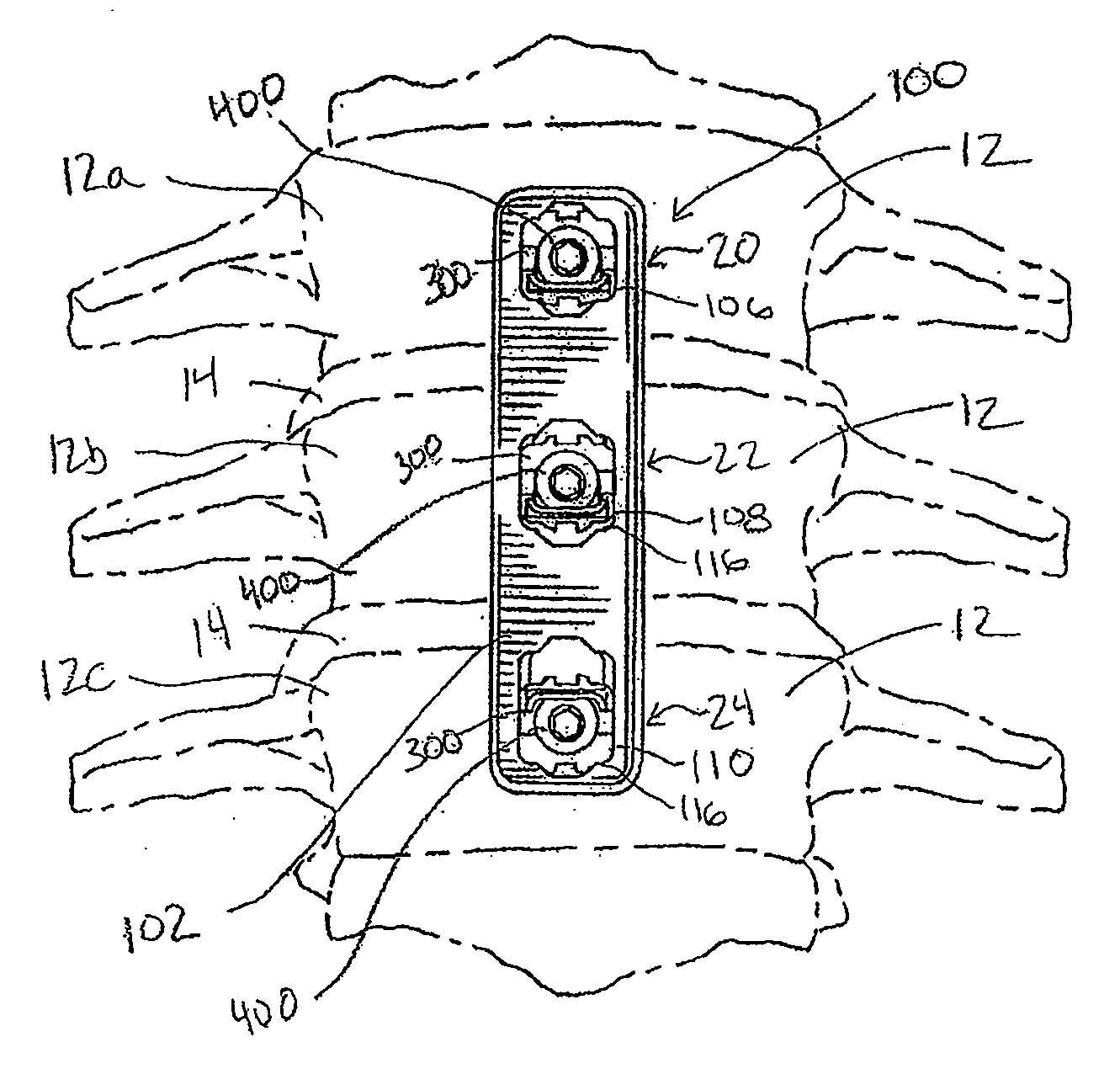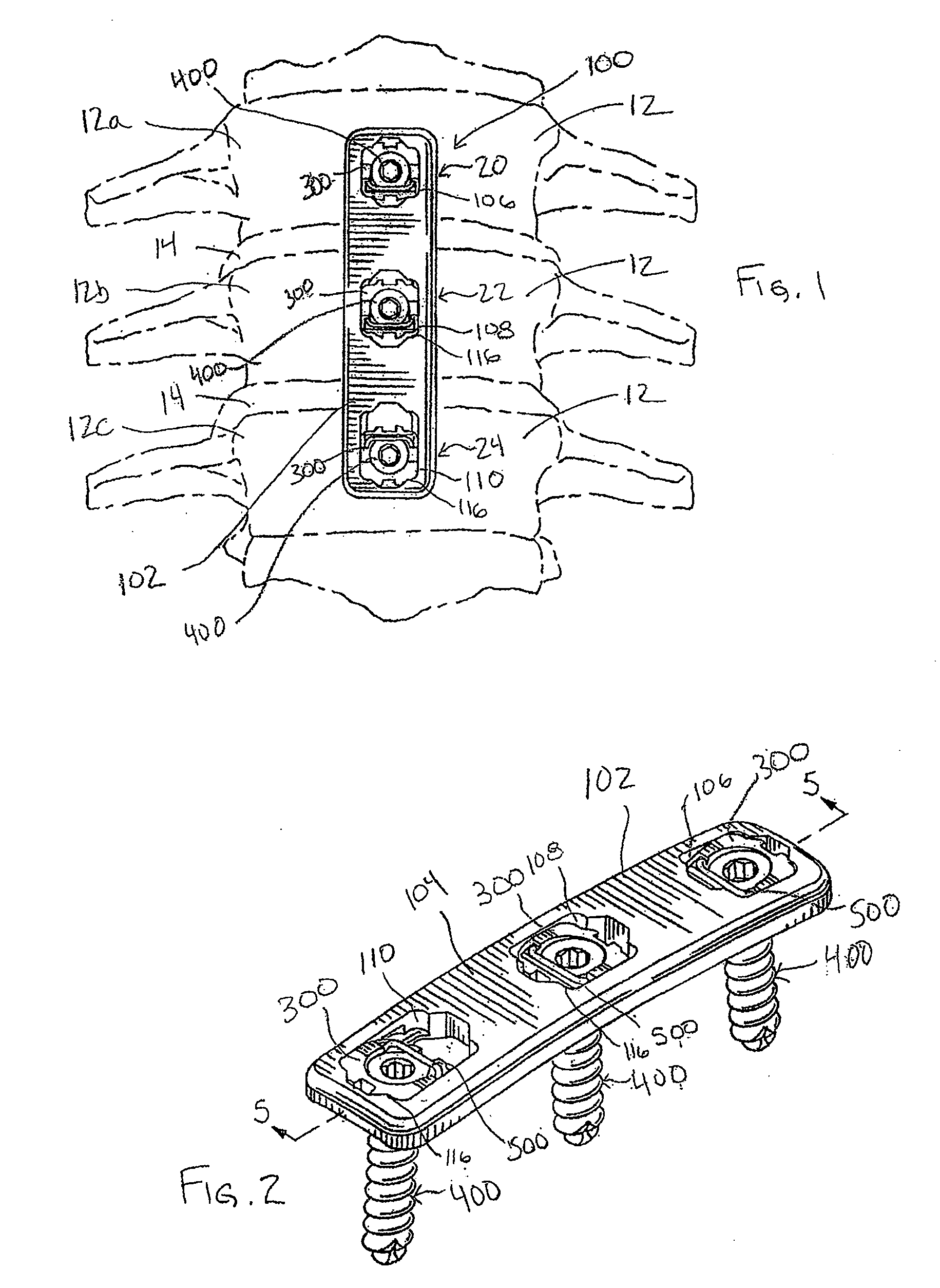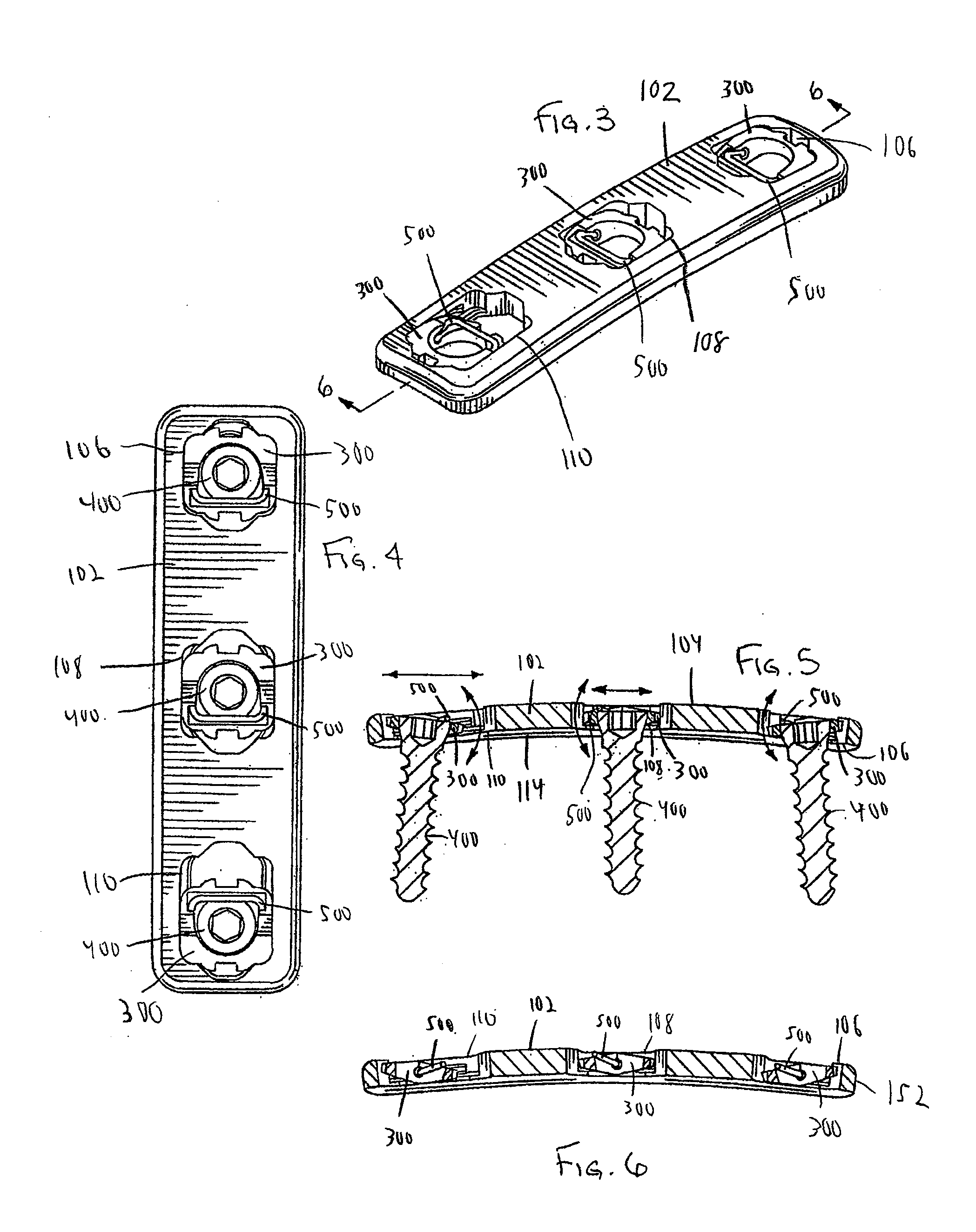Bone Plate System
a technology of bone plate and esophagus, which is applied in the field of bone plate systems, can solve the problems of irritating the esophagus and other soft tissues of patients, affecting the recovery time of patients, and a relatively wide profile of the bone plate, so as to improve the torsional stability
- Summary
- Abstract
- Description
- Claims
- Application Information
AI Technical Summary
Benefits of technology
Problems solved by technology
Method used
Image
Examples
Embodiment Construction
[0165]Generally speaking, pursuant to these various embodiments, bone plate systems are disclosed herein for securing a plurality of bones 12 in a desired orientation and arrangement. In some forms, the bone plate system utilizes a dynamized plate with dynamic bores so that bones may compress and shift toward each other, such as with dynamic or dynamized bone plate systems 100, 1100, 1700 shown in FIGS. 1, 36, and 45, respectively. In other forms, bone plate systems utilize standard plate members with throughbores of the same size, such as standard bone plate systems 200, 1200 shown in FIGS. 7, 43.
[0166]Referring now to the figures, and in particular to FIGS. 1-6, a dynamized bone plate system 100 is shown. Referring to FIG. 1, the dynamized bone plate system 100 assists in the healing and repair of damaged, fractured, or broken bones. In the exemplary illustration of FIG. 1, bones 12 are adjacently located vertebrae of a spine, each spaced by a spinal disc 14. The bone plate system...
PUM
 Login to View More
Login to View More Abstract
Description
Claims
Application Information
 Login to View More
Login to View More - R&D
- Intellectual Property
- Life Sciences
- Materials
- Tech Scout
- Unparalleled Data Quality
- Higher Quality Content
- 60% Fewer Hallucinations
Browse by: Latest US Patents, China's latest patents, Technical Efficacy Thesaurus, Application Domain, Technology Topic, Popular Technical Reports.
© 2025 PatSnap. All rights reserved.Legal|Privacy policy|Modern Slavery Act Transparency Statement|Sitemap|About US| Contact US: help@patsnap.com



